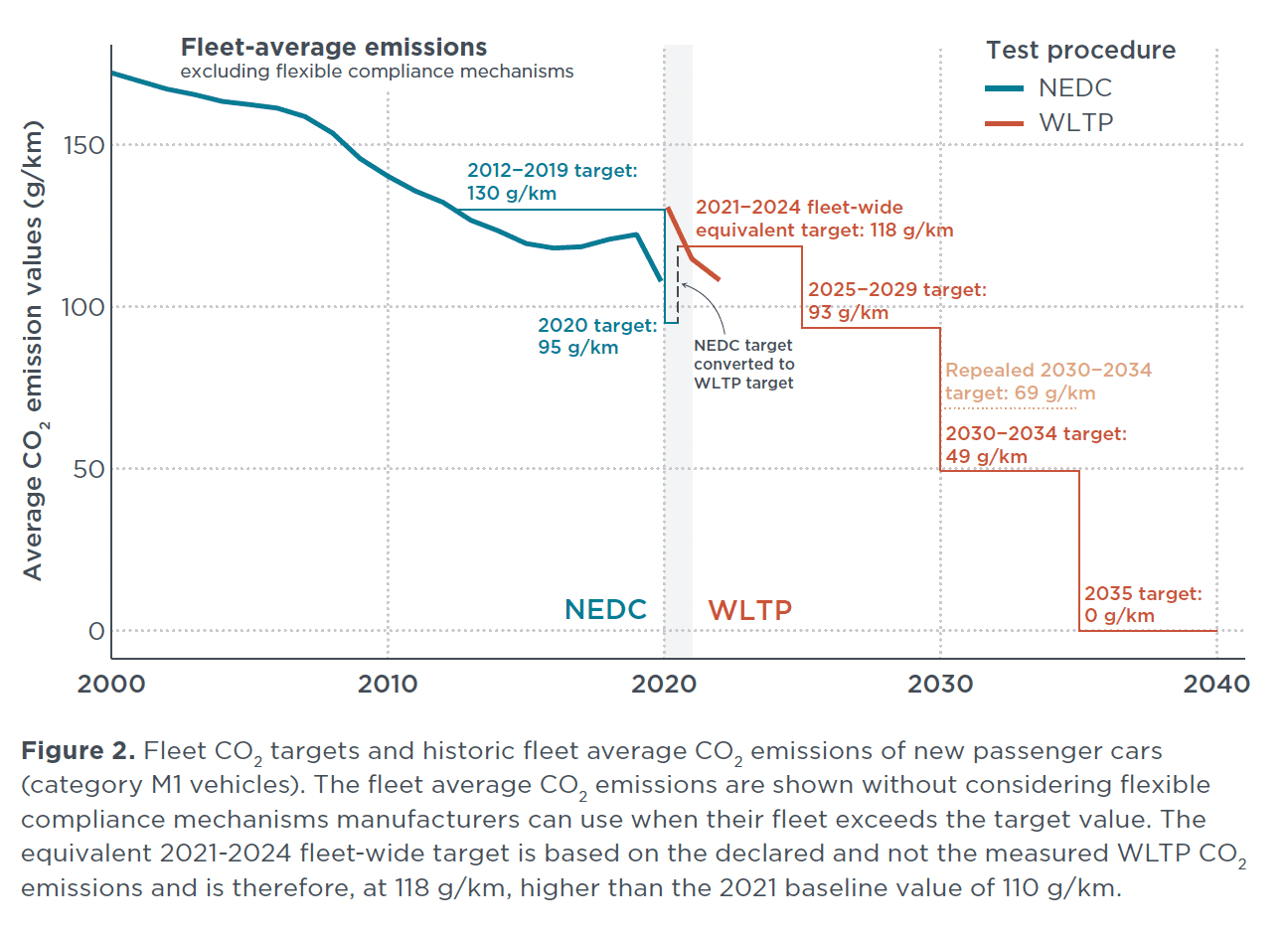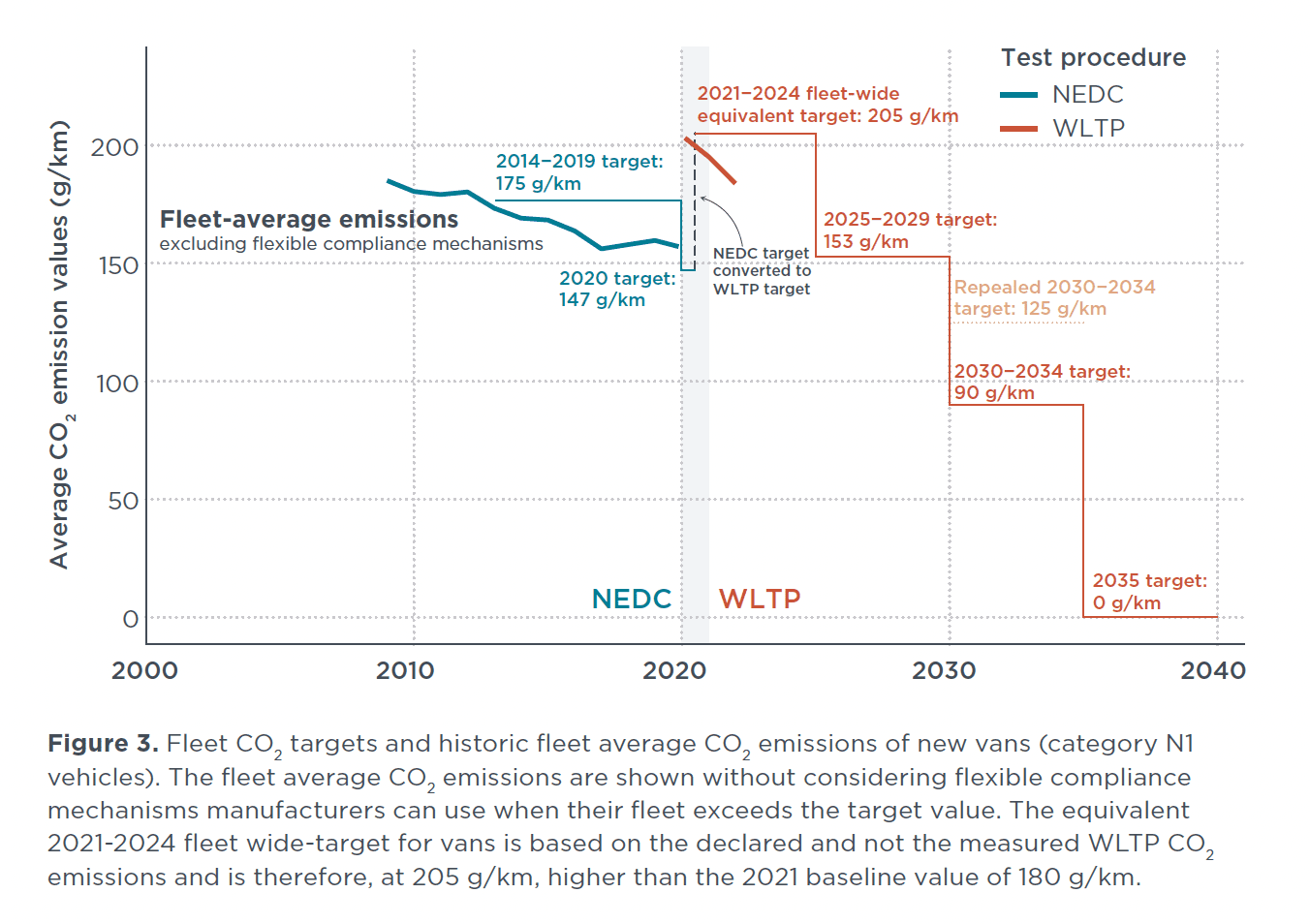Within reach: The 2025 CO2 targets for new passenger cars in the European Union
Policy update
CO2 emission standards for new passenger cars and vans in the European Union
On March 28, 2023, the European Union adopted a ground-breaking amendment to the EU light-duty vehicles (LDV) CO2 standards. With this amendment, the EU will be the first major region worldwide to introduce a 100% CO2 emission reduction target for all cars and vans newly registered from 2035 onwards. In addition, the current CO2 reduction target for 2030 was strengthened to -55% for cars and -50% for vans, compared to a 2021 baseline.
This ICCT policy brief reviews the key elements of this regulation and potential risks for the decarbonization of the transport sector. Some highlights include:
- More ambitious emissions reductions, but only from 2030 onwards. The target for 2025 remains unchanged (-15%), and the 2030 target is strengthened from -37.5% to -55%, relative to a 2021 baseline. For 2035, a 100% reduction target is introduced.
- The door is open for e-fuels. An exception for a new category of zero-emission vehicles which run exclusively on synthetically produced CO2-neutral fuels of non-biological origin is expected to be introduced as a Delegated Act. This category could entail numerous disadvantages.
- Incentives for electric vehicles in the EU CO2 standards will end in 2030. The Zero- and Low-Emission Vehicle (ZLEV) credit threshold of 25% is unlikely to substantially accelerate the market uptake of electric vehicles. Instead, it will likely only weaken the CO2 reduction targets.




